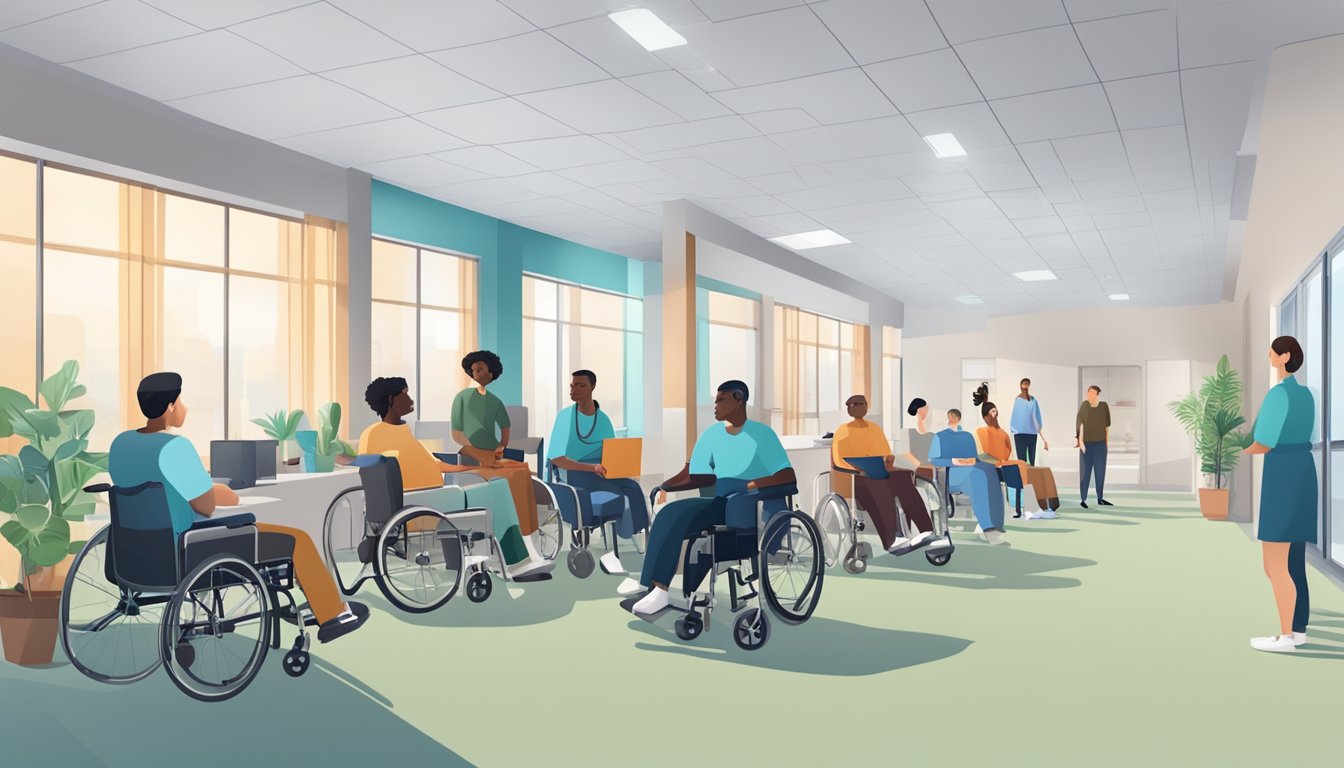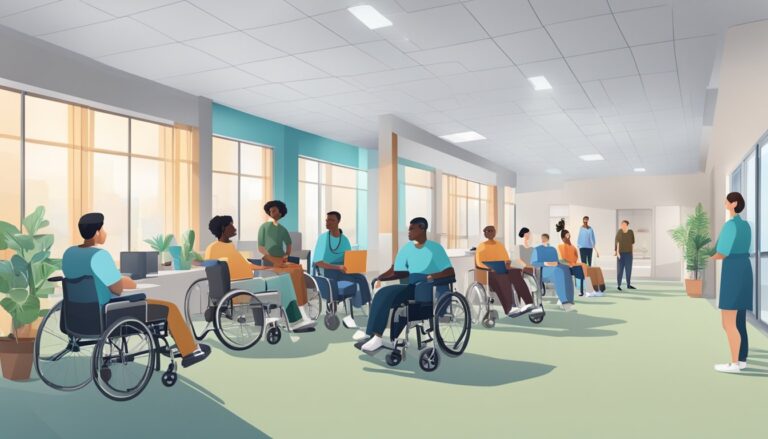Understanding Disability: Definitions and Scope
Disability can take many forms and affect various aspects of life.
According to the Americans with Disabilities Act, a disability is a physical or mental impairment that substantially limits one or more major life activities.
This includes conditions like cerebral palsy, autism, and muscular dystrophy.
You might encounter people with intellectual or learning disabilities.
These can affect their ability to process information or perform certain tasks.
For instance, someone with autism spectrum disorder may struggle with social interactions.
Types of Disabilities:
- Physical: Includes mobility issues like those who use wheelchairs or have arthritis.
- Sensory: Involves impairments like deafness, blindness, or low vision.
- Mental Health: Covers conditions such as depression or anxiety.
The International Classification of Functioning, Disability, and Health (ICF) offers a comprehensive framework for understanding disability.
It looks at both the medical condition and the environmental factors affecting the individual.
Examples of Impairments:
- Cognitive: Challenges in memory or problem-solving.
- Physical: Difficulty with movement or coordination.
- Sensory Functions: Issues like difficulty seeing or hearing.
Insurance policies often include definitions of disability to determine eligibility for benefits.
This can vary, including long-term disability for severe impairments that prevent you from working.
Understanding the scope of these definitions helps in differentiating between temporary and permanent conditions.
It’s crucial to know whether an individual has a record of an impairment or is regarded as having such an impairment, even if they currently do not have a significant limitation.
This knowledge is essential in providing the appropriate coverage and support for individuals with disabilities.
The nuanced definitions and scopes ensure fair and adequate protection for all parties involved.
Legal Aspects and Civil Rights for People with Disabilities
The legal landscape for people with disabilities involves several key laws and principles.
A fundamental law in this area is the Americans with Disabilities Act (ADA).
This act protects against discrimination in various settings such as employment, public accommodations, transportation, and telecommunications.
Under the ADA, employers are required to provide reasonable accommodations to employees with disabilities.
These accommodations might include modifications to the workplace, changing work schedules, or providing special equipment.
Employers must also ensure that their policies do not discriminate against individuals with disabilities.
Discrimination can occur when a person with a disability is treated unfairly or excluded from major life activities.
Major life activities include tasks such as walking, talking, and working.
The ADA ensures that these activities are not substantially limited due to disabilities.
The World Health Organization has emphasized the importance of inclusion and participation for people with disabilities.
This includes ensuring that individuals with disabilities can communicate effectively and participate fully in society without facing barriers.
In the insurance industry, understanding civil rights for people with disabilities is crucial.
Insurers must offer plans that do not discriminate against these individuals.
This means avoiding practices that would deny coverage or unfairly limit benefits based on disability status.
The disability rights movement has been instrumental in advancing the civil rights of people with disabilities.
This movement has pushed for laws and policies that promote equality, inclusion, and fair treatment across all sectors, including insurance.
Training for both staff and policyholders on disability rights is vital.
Such training helps ensure that both parties are aware of their rights and obligations under the law, further fostering an inclusive environment.
Integrating Disability in Society: Health Care and Employment

Integrating disability in society involves improving health care and employment opportunities for people with disabilities.
Access to medical services, such as rehabilitation for spinal cord injury, is crucial.
It’s essential for individuals with disabilities to have equal opportunities in both health care and the workplace.
In health care, individuals with conditions like diabetes, cancer, or multiple sclerosis require support.
The Patient Protection and Affordable Care Act aims to ensure that everyone, including people with pre-existing conditions, receives necessary care. Comprehensive coverage should include treatment for mental impairment, asthma, and stroke.
Employment for people with disabilities involves addressing workplace discrimination and ensuring proper accommodations are in place.
This includes making the workplace accessible for those with limb loss or those using a walker or cane. Employers need to provide necessary training and create policies that support inclusivity.
Technology can assist in breaking down barriers in both health care and employment.
For example, using assistive devices for seeing, hearing, and speaking enhances participation.
Ensuring that workplaces are inclusive can significantly boost morale and productivity among employees with disabilities.
Providing equal pay and ensuring wellness programs that accommodate all employees, including those with autism or mental health challenges, promotes an inclusive environment.
The ADA (Americans with Disabilities Act) supports these rights, ensuring individuals are not excluded due to their disabilities.
Addressing these aspects is vital for the disability rights movement.
It ensures that people with disabilities can fully participate in society, with equal access to activities, education, and employment, reducing barriers and improving quality of life.






